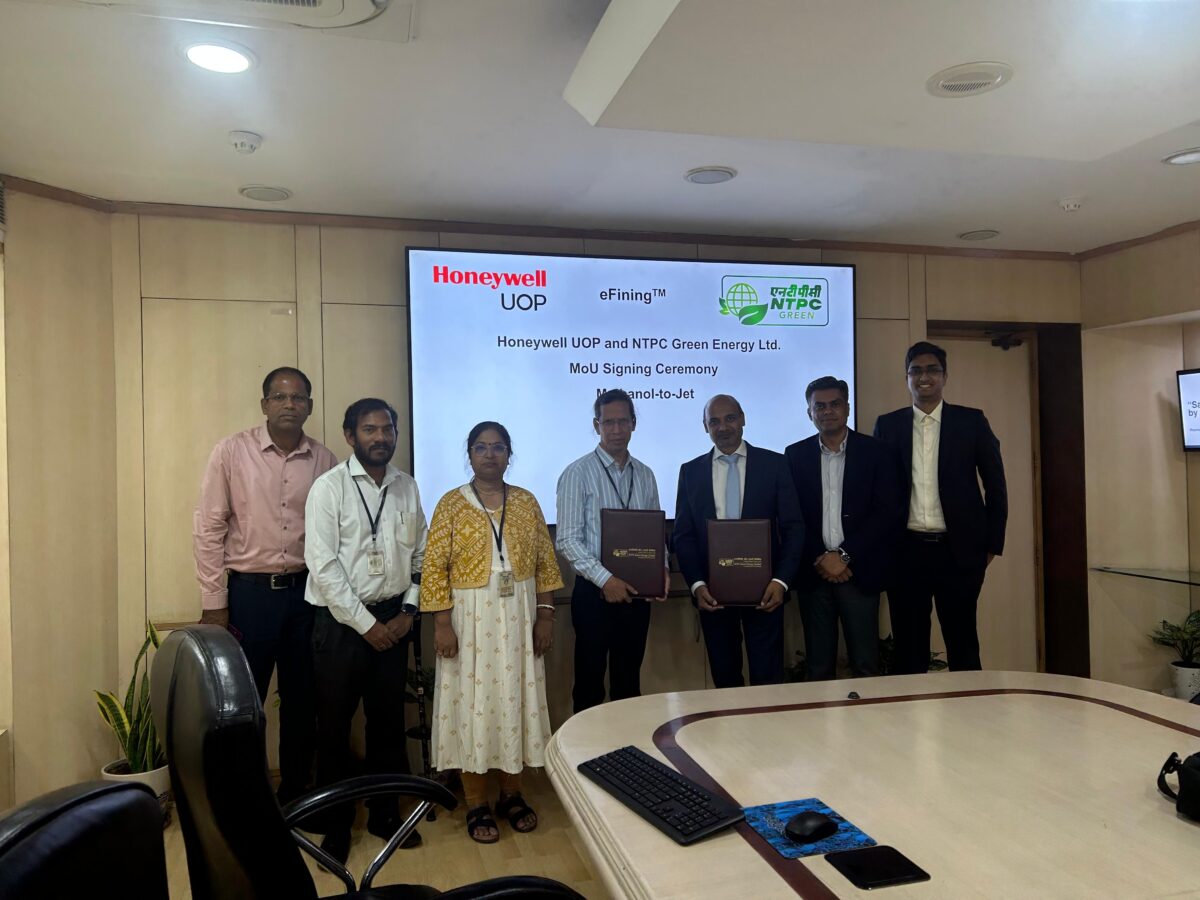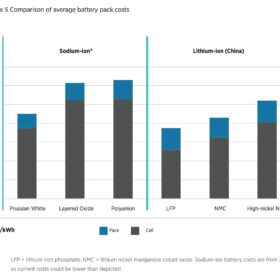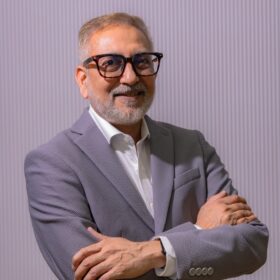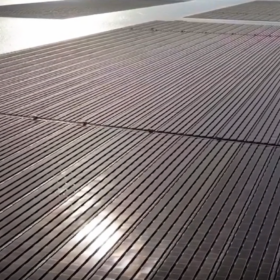Honeywell has signed a Memorandum of Understanding (MoU) with NTPC Green to explore the production of sustainable aviation fuel (SAF) in India. The companies will explore the use of Honeywell’s proprietary eFining technology to produce SAF from carbon dioxide (CO2) feedstock captured from NTPC’s power plants and green hydrogen.
“SAF production forms the sizeable part of the ambitious Green Hydrogen Hub of NTPC Green in Pudimadaka, Andhra Pradesh. We believe that the mandate in the aviation sector for blending SAF in jet fuel will drive many early mover projects in green hydrogen,” said DMR Panda, Executive Director (Green Hydrogen), NTPC Ltd.
The collaboration brings together Honeywell UOP’s expertise in SAF production and NTPC’s leadership in green hydrogen projects development. SAF is seen as a critical tool to help decarbonize the aviation sector.
“We are excited to work with NTPC Green on this initiative to advance India’s transition towards cleaner aviation fuels and goal of working toward carbon neutrality,” said Ranjit Kulkarni, Vice President and General Manager, Energy and Sustainability Solutions, Honeywell India. “Our collaboration with NTPC Green will leverage Honeywell’s expertise in SAF solutions to efficiently treat emissions from thermal energy, foster green hydrogen adoption, diversify feedstocks for SAF production and help India’s aviation sector meet its long-term environmental goals.”
The study, expected to be completed by mid-2025, will support India’s dual mission of positioning itself as a SAF hub and achieving its emissions reduction goals by building a pathway toward promoting the production and export of SAF to other regions.
The European Commission has selected 15 renewable hydrogen production projects for €992 million in EU public funding across the European Economic Area (EEA). “The projects, located across five countries, are expected to produce nearly 2.2 million tons of renewable hydrogen over ten years,” said the European executive body. Eight projects will be in Spain, three in Norway, two in Germany, one in Finland, and one in the Netherlands. The biggest projects in terms of bid capacity are one in the Netherlands, followed by one in Germany. In terms of bid price, seven out of the eight cheapest hydrogen projects are in Spain. The funds will come from Innovation Fund, sourced from the EU Emissions Trading System (ETS).
The European Union, which recently decided to continue technical regulatory exchanges on hydrogen with the United Kingdom, has published its opinion on the statutory documents of the European Network of Network Operators for Hydrogen (ENNOH), the association representing future hydrogen transmission network operators at the EU level. The European Commission said the operators must adopt and publish the final statutory documents by early July 2025, incorporating feedback from both the Commission and the Agency for the Cooperation of Energy Regulators (ACER).
The Japanese government has agreed to subsidize hydrogen for fuel cell trucks and buses in six prefectures, with the subsidy set at JPY 700 ($4.80)/kg, according to Nikkei. Government official Shinichi Kihara said at the World Hydrogen Summit in Rotterdam that Japan’s contracts-for-difference (CfD) program for clean hydrogen has been oversubscribed, with project selection expected to begin in the latter half of the fiscal year. Japanese and German officials also met in Rotterdam to discuss hydrogen demand creation and financing.
Infinium has selected Electric Hydrogen’s 100 MW solution for its large-scale eFuels facility in Texas. “Electric Hydrogen’s HYPRPlant is a complete solution that lowers hydrogen total installed project cost by up to 60% relative to other electrolyzer solutions,” said Electric Hydrogen, which produces the system between Massachusetts and Texas. Electric Hydrogen said that its modular manufacturing approach makes the HYPR plant “less expensive and more reliable” than imported Chinese products.
KK Wind Solutions has agreed to supply 10 customized power supply units for Sunfire’s 100 MW pressurized alkaline electrolyzer, with each unit including transformers, rectifiers, AC connections, and cooling systems. It previously delivered two units for Sunfire’s 10 MW pilot electrolyzer in 2023, each consisting of a 5 MW rectifier and a transformer. KK Wind Solutions said the experience from that project was critical to scaling the power supply units to 10 MW for full-scale green hydrogen production.
This content is protected by copyright and may not be reused. If you want to cooperate with us and would like to reuse some of our content, please contact: editors@pv-magazine.com.









By submitting this form you agree to pv magazine using your data for the purposes of publishing your comment.
Your personal data will only be disclosed or otherwise transmitted to third parties for the purposes of spam filtering or if this is necessary for technical maintenance of the website. Any other transfer to third parties will not take place unless this is justified on the basis of applicable data protection regulations or if pv magazine is legally obliged to do so.
You may revoke this consent at any time with effect for the future, in which case your personal data will be deleted immediately. Otherwise, your data will be deleted if pv magazine has processed your request or the purpose of data storage is fulfilled.
Further information on data privacy can be found in our Data Protection Policy.